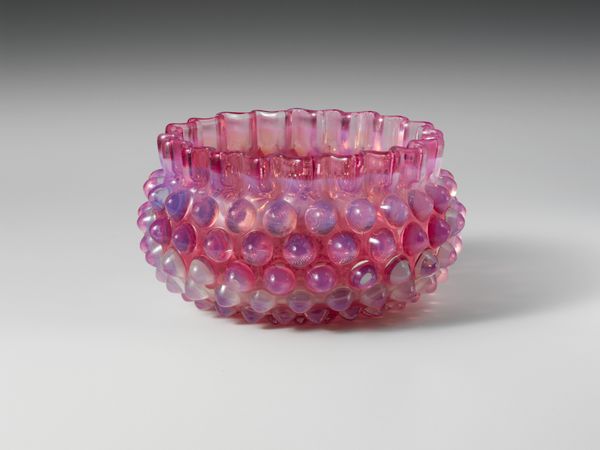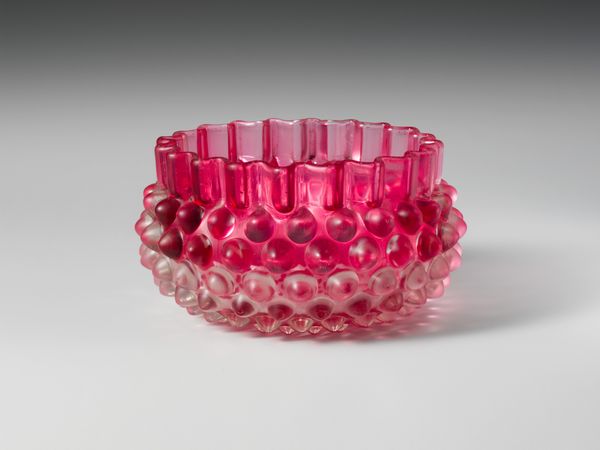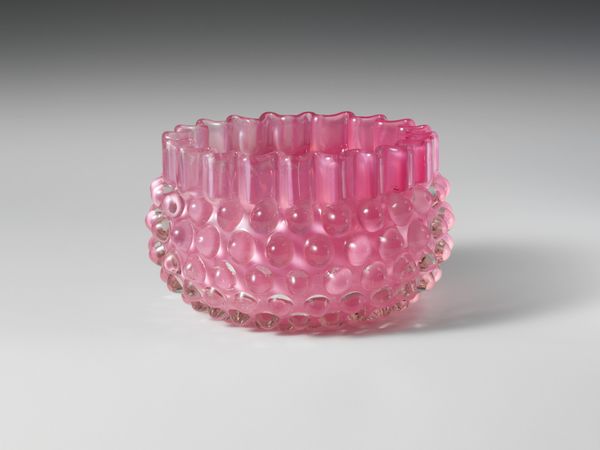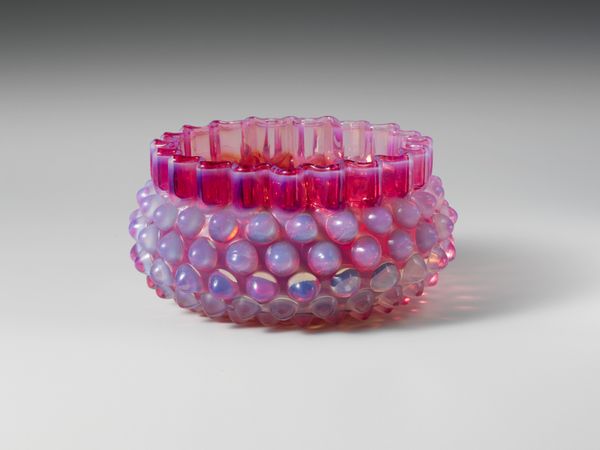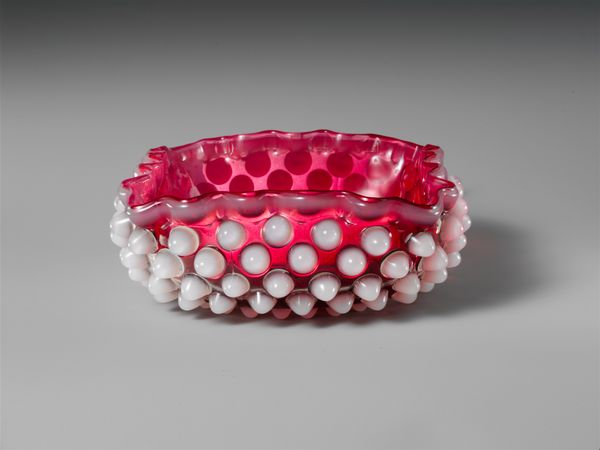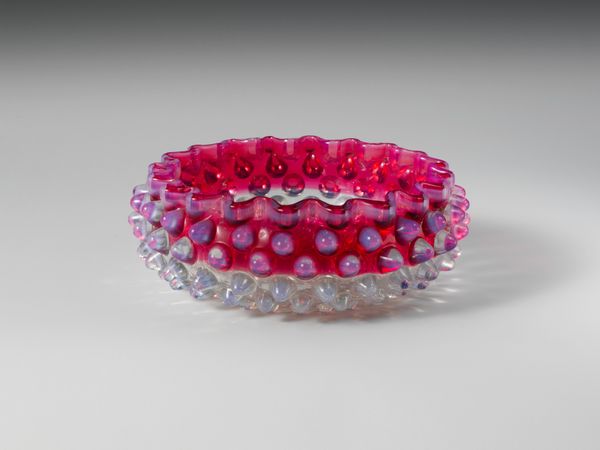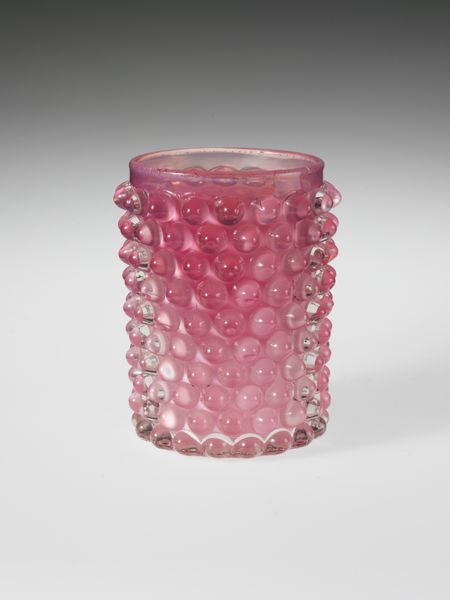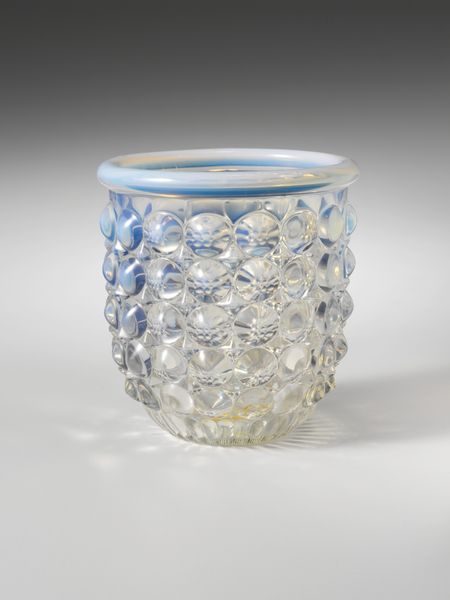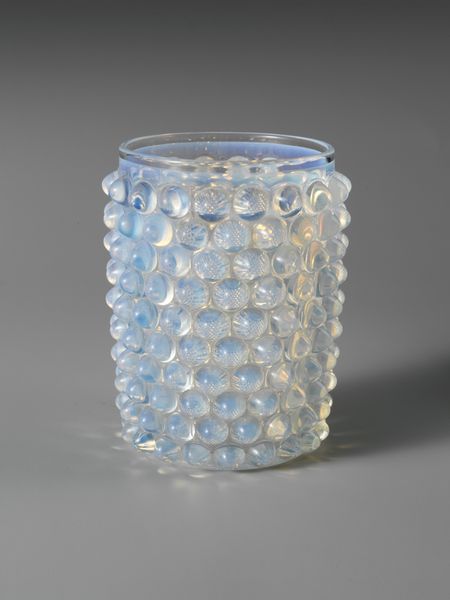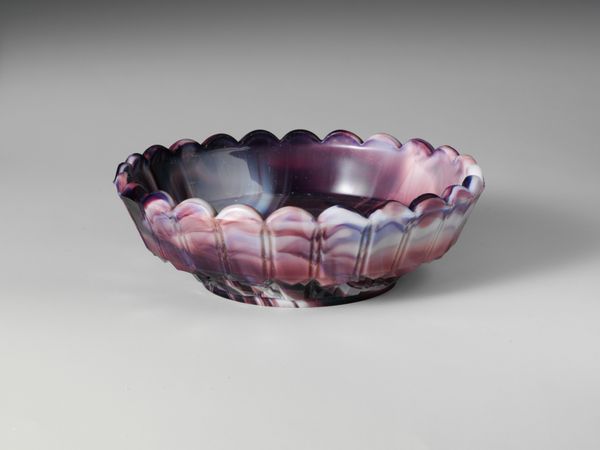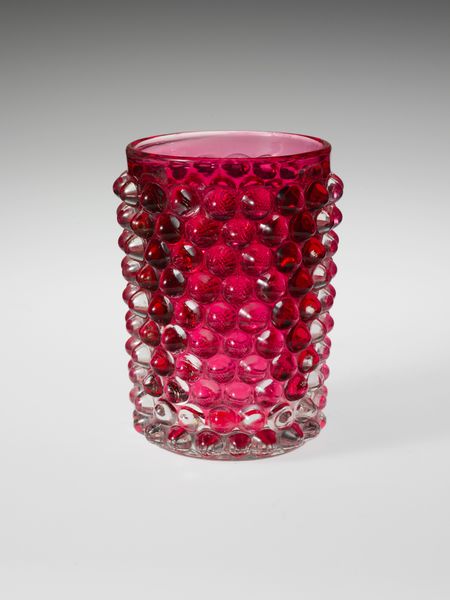
glass
#
glass
#
united-states
#
decorative-art
Dimensions: H. 2 3/4 in. (7 cm); Diam. 5 in. (12.7 cm)
Copyright: Public Domain
This "Hobnail Finger Bowl" was created by Hobbs, Brockunier and Company sometime between 1863 and 1891. It is an example of late 19th century American glassmaking. In a burgeoning industrial landscape, glass factories like Hobbs, Brockunier and Company mass-produced decorative and functional wares that were accessible to a growing middle class. The "hobnail" pattern, achieved through molds, simulated the more expensive cut glass, speaking to aspirations of luxury within reach of ordinary households. The pink-tinted glass also reflects popular tastes, adding to the bowl's decorative appeal. The rise of industrial capitalism in America fundamentally reshaped the landscape of consumption, and museums began collecting and exhibiting these mass-produced objects as examples of American ingenuity and design. Examining trade catalogs, company records, and period advertisements can give us even more insight into the culture that produced and consumed it. The meaning of this bowl, therefore, exists not just in its form but also in its complex relationship to social and economic histories.
Comments
No comments
Be the first to comment and join the conversation on the ultimate creative platform.

